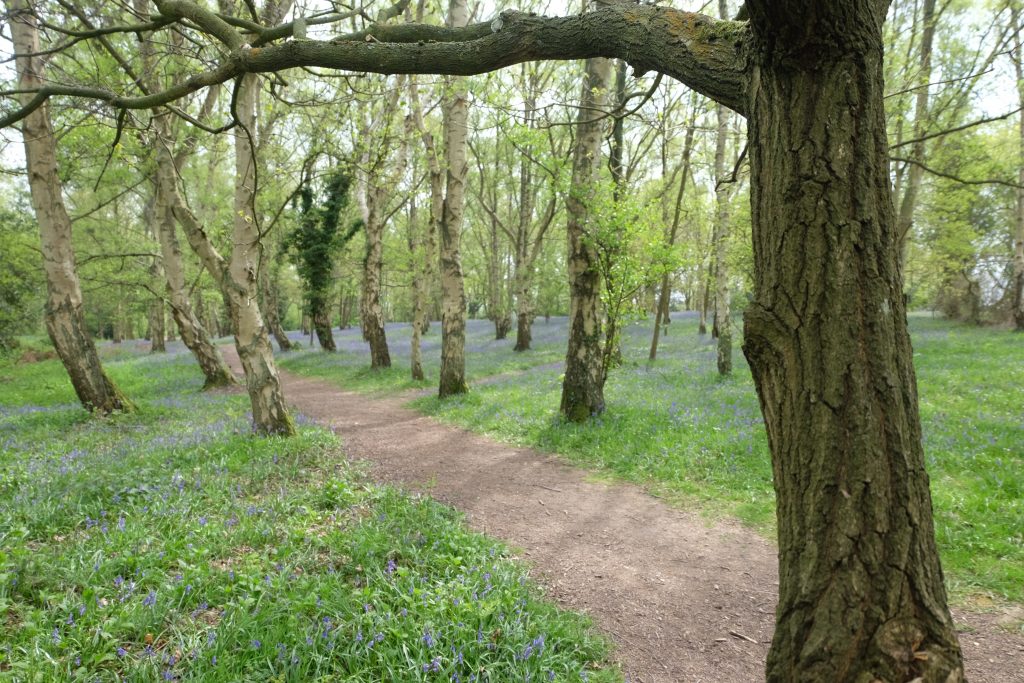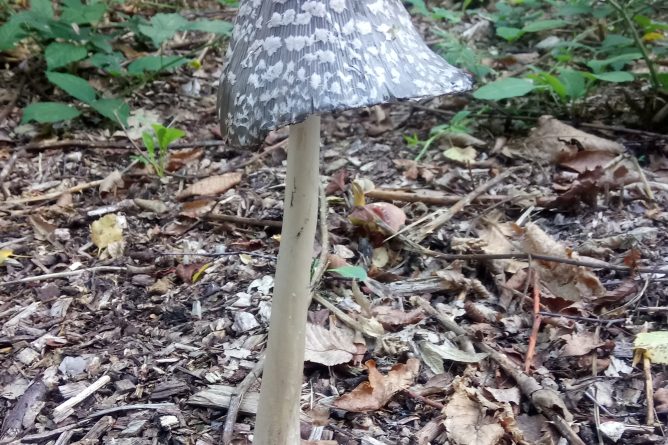The original nature trail on the Canterbury campus was devised in 1985 and written by John Kesby and Ian Swingland. Here are the opening paragraphs from the original guide:
“The nature trail around the University’s 300 acre campus, with its magnificent hillside setting overlooking the Cathedral City of Canterbury and the valley of the Great Stour, has been devised for the benefit of its staff and students, members of the local community and of the thousands of people who visit us during the year, be they conference delegates or holiday makers.
The trail combines the opportunity for attractive walks around the grassy slopes, ponds and woodland of the campus with a challenge to discover how much you can see or hear of the abundant wildlife around us. This brochure will guide you to places where you can find nightingales, willow warblers, great spotted woodpeckers and even the occasional kingfisher, to observe damselflies or Essex skippers; to watch out for lizards, newts, three-spinned sticklebacks or voles; to identify parrot wax caps, prickly lettuce, bristly ox tongue or red goosefoot. We hope it will be enjoyed by those who have difficulty putting a name to even the most common flora and fauna. At the same time, we hope it will be of interest to knowledgeable naturalists and of value to parties from the schools of other groups of wildlife enthusiasts.”

Whilst the description of the campus overlooking the Cathedral may still ring true the list of species that could be seen on campus in 1985 would be much shorter today.
In order to map out what we have lost it is useful to fully understand what we had. Thankfully we have a few copies left of the 1985 guide with its detailed species lists. The Sustainability Team will be digitising all of this information so that it will be available to everyone so that as a community we can start to identify what we still have on campus, what is hard to find and what is gone.
Some trends of population decline go far beyond what we control on campus, however, there may be some species that are found locally that we may be able to encourage back through how we manage our campus and connect to habitats beyond our borders.

We would like students, staff and community members to help us with this undertaking by, in the first instance, recording what they spot. Big or small, common or rare we want to know what you have seen and where you have seen it. At the moment we are just asking people email their information into us at sustainability@kent.ac.uk and we will collate it all as a first step to building a clear picture of what we have on campus.
We are also working on rejuvenating the information about the nature trails and rerouting the original trail around some of the new buildings on campus that now block the original route.
If you are interested in this project and want to volunteer your time on this, please do get in touch.

